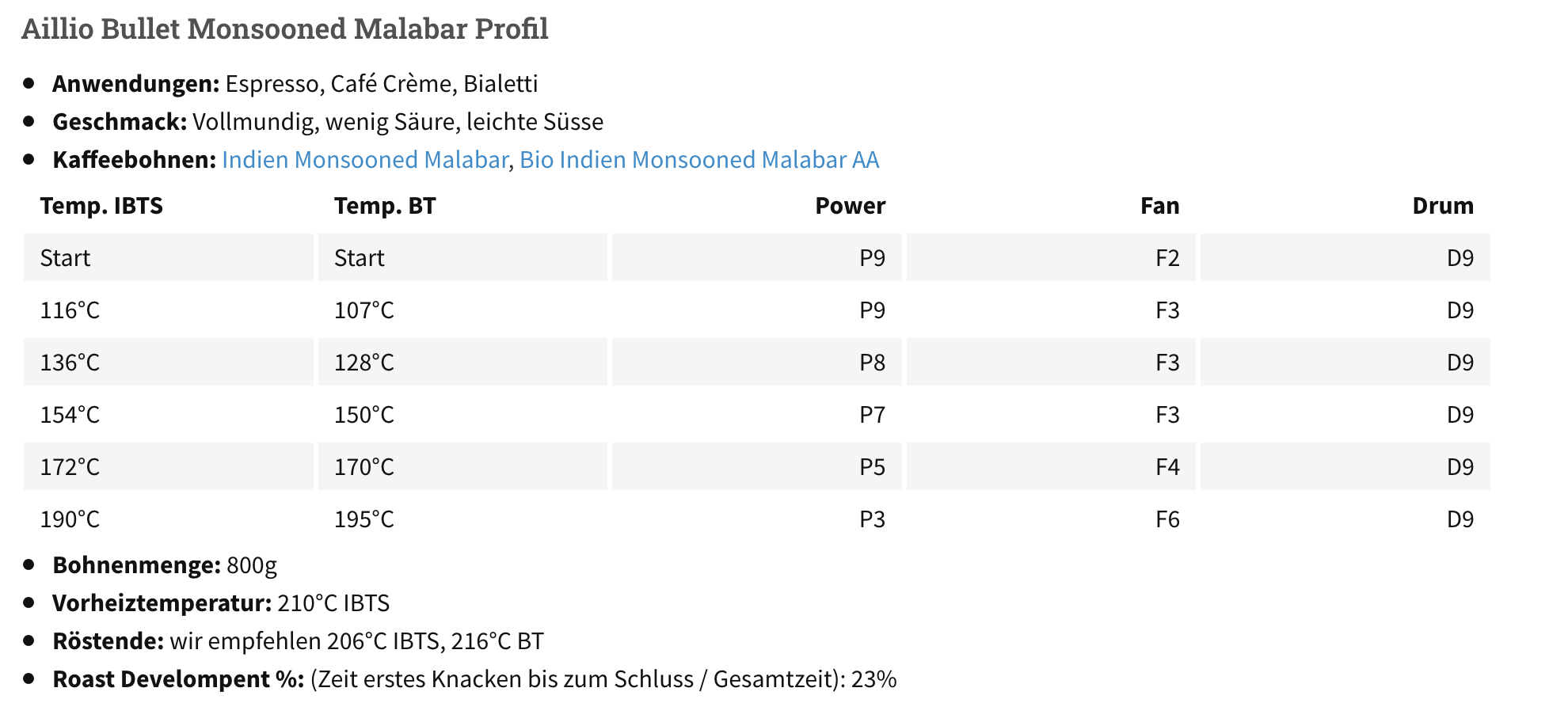How I roast my own coffee
The time has come. I have started roasting my own coffee beans.
After several years of buying and consuming supposedly high-quality coffee, I realized that I had never really looked into the coffee bean as a subject. Once I had found a new delicious coffee and adjusted my grinder to it, I kept buying the same roast. I only changed my choice of bean a few times. If I remember correctly, the selection of beans so far amounts to:
- Rösterei Vier - ITALO POP
- Plum's Kaffee - Selezione
- Dino Cappuccino - CAFFE PRIMAVERA
- Dino Cappuccino - CAFFE D'ORO
Funny, that's it...
Of course, it was always important to me that the coffee was produced under acceptable circumstances, which means that the quality of beans was high, payment for farmers was accurate and the processing was some kind of focused on quality and not quantity. One does not invest in a high-end espresso machine and then buys low quality coffee beans... That’s the same like getting a Porsche and only drive your kids to school. LOL.
So, out of pure interest, as is often the case, I took a closer look at the subject of coffee, coffee beans and roasting. Once again I fell down a rabbit hole. After watching some introductory videos on the subject on YouTube, I read the book "The World Atlas of Coffee", which gave me a detailed insight into the subject, so that my interest was intensified once again. One thing was immediately clear: coffee is a complex topic.
My first roast
After a few days of diving through the ocean of roasting knowledge, I made an appointment with a friend who is owning a roasting machine. Things got serious now. Therefore, I had to answer the following questions:
- Where do I buy raw coffee beans?
- What type of coffee bean do I want to roast?
- What amount of beans shall I buy to get started?
- Is there a general roasting profile for my selected beans available to not fail completely?
As I planned to buy a rather small batch of raw beans for the beginning, I searched the internet for easy-to-use suppliers. In the end, I ended up ordering everything on https://roastrebels.com. In order to decide on the specific bean to purchase, I checked which bean I was drinking lately. It was an Indian Monsooned Malabar. Based on Aspinwall Coffee “the monsoon sea weather worked its magic on beans making them swell and acquire a texture smooth and soft to the touch. The coffee developed an incredibly complex taste profile which, won connoisseurs the world over”. It seems to be a popular choice for italian-style espresso roasts.
Hence, the only open question I had to answer was if there is some kind of roasting template or guide for this specific bean. Fortunately, there was one for another roasting machine. I knew that this won’t be exactly the same for the roaster my friend and i were using, however, it helped us dialing in the custom configuration a bit easier and faster to decrease the waste of lovely coffee. The roasting profile template we ended up using was this:

Since we had actually no freaking idea of what the "perfect" roast for this particular set up was, we did three different batches. With each batch that we roasted, we changed one variable, the so-called development time that starts after the coffee bean cracks the first time. With the third batch, we as well changed the batch size to check how the roast changes when less beans must be heated by the roaster.
Results

- Batch
- Roast time: 11:19 min
- Development time: 01:55 min
- Batch size: 200g

- Batch
- Roast time: 11:07 min
- Development time: 02:55 min
- Batch size: 200g

- Batch
- Roast time: 07:30 min
- Development time: 01:00 min
- Batch size: 150g

Tasting
After the coffee has been roasted, it needs a few days to outgas the stored CO2. This means that immediately after roasting, it does not really taste like the flavors you wanted to bring out. Accordingly, I waited a week and then started with the first batch. It can be said that it resembles the comparison product, i.e. the professionally roasted version, in certain parts, but is not as intense or rather complex in taste. I would have been very surprised after roasting it for the first time... What you can clearly say is that the 2nd batch tastes very, very chocolaty and rather bitter. You can also clearly see from the pictures that this roast is much darker than the others. The funny thing is that this is by no means the darkest roast result that can be achieved. Look for it when you see the beans in a café. They can be almost black. It's all a matter of taste.
Next Steps
There are so many different varieties of Arabica and Robusta beans and certainly many more possible roasting profiles, whereby every small change can significantly influence the taste. To get to know as many of these roasting options as possible, I need to try as many different roasts from different roasters as possible. Accordingly, over the next few months I will be looking for specialty roasters and testing their tasting packages to gain an insight into the wonderful world of flavors. If you have a recommendation, please let me know!
I'd say let's get started.
Books
Videos
- Wie man guten Kaffee macht | SWR Handwerkskunst
- Wie ein Barista Espresso und Latte Art macht | SWR Handwerkskunst
- A Beginner's Guide To Buying Great Coffee
- A Beginner's Guide To Resting Coffee
- Coffee Roasting Explained
- Allio Bullet: From Roast to Brew
- Roasting Coffee on the Allio Bullet